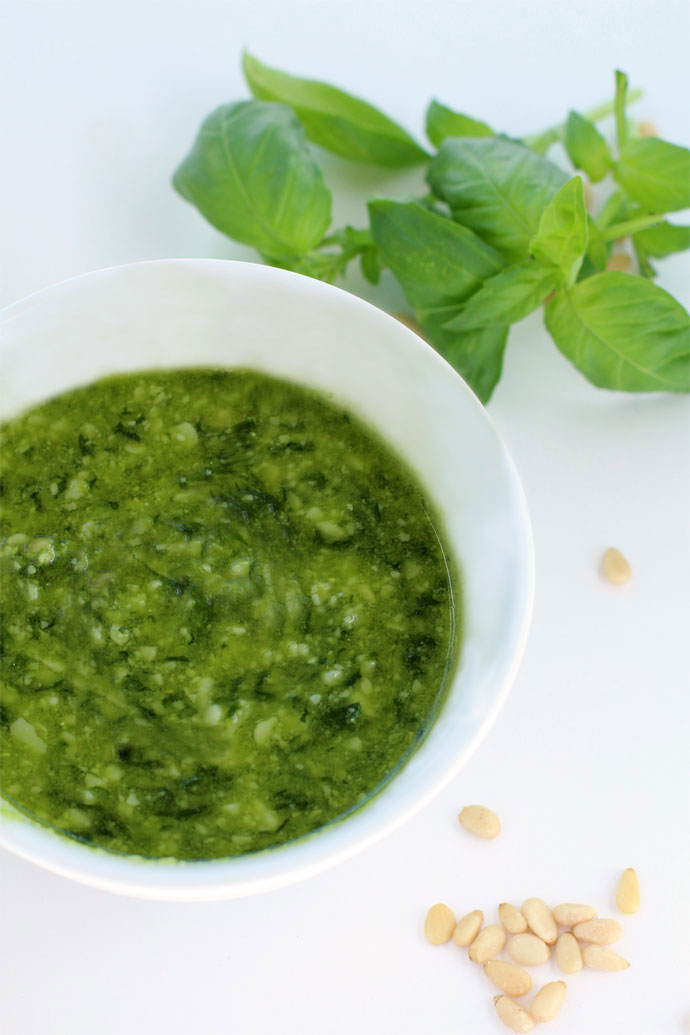
As if it weren’t enough that little old Italian ladies hike up coastal Ligurian hillsides to harvest basil from steeply terraced gardens, they’re also crushing by hand the garlic, basil, pine nuts and cheese for classic basil pesto with a mortar and pestle.
If you’ve ever tried fresh pesto in Italy, you know the difference using a mortar and pestle makes. The ingredients are varied in texture and size and each bite tastes fresher than blender pesto or this jarred pesto.
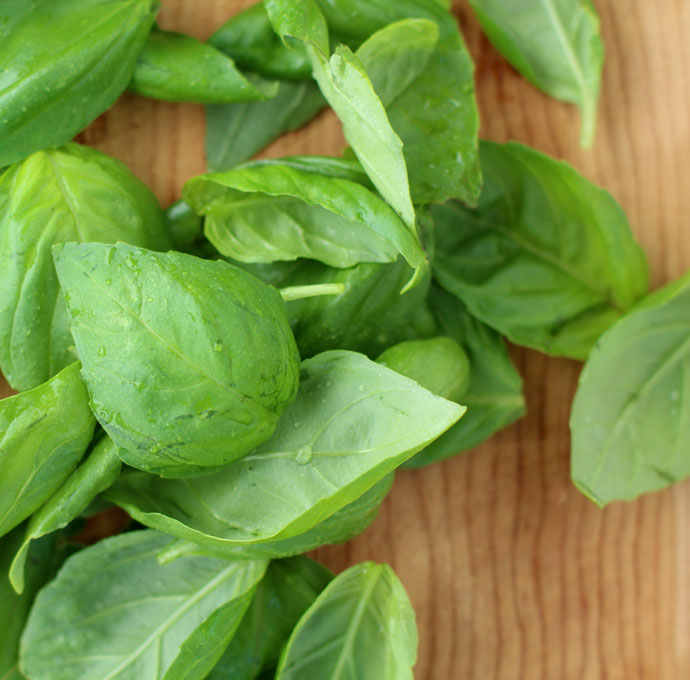
Ready to be crushed!
Plus, there is the joy of making things by hand — the way they have been made since the 16th century, before electricity.
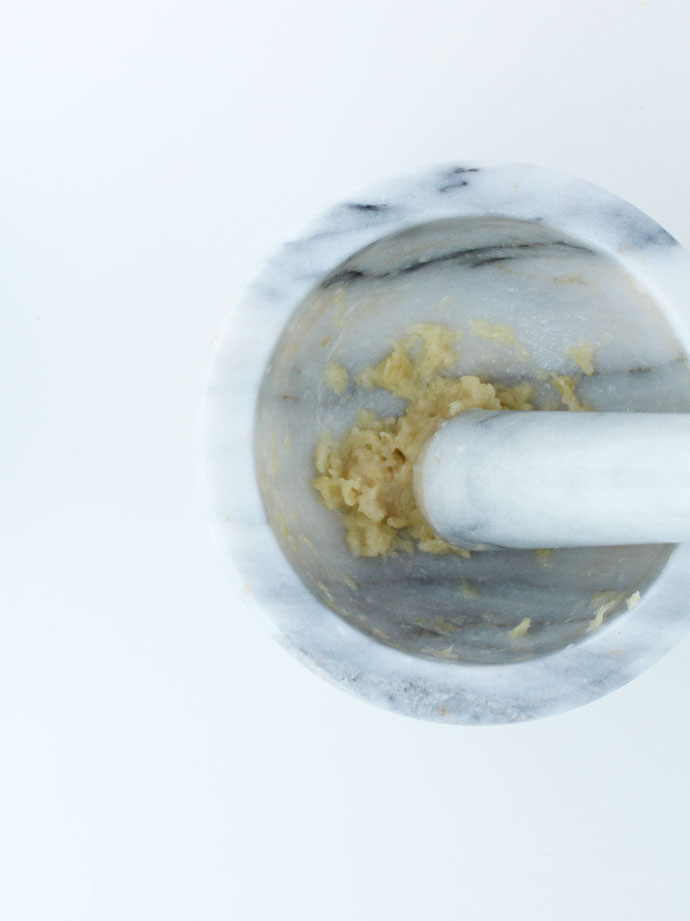
Oh, hello mortar and pestle, friend of garlic cloves everywhere.
Quick History: The tradition of pesto (from the Italian verb pestare, meaning “to pound”) hails from Genoa in Northern Italy. Pesto’s full name is pesto alla genovese and is at its best in the Ligurian region where the climate is perfect for growing basil.
I was lucky enough to visit this part of Italy recently, and hike the steep hillside towns of Cinque Terre. We sat down with several plates of pesto with Trofie Liguri or gnocchi and pesto on toast with fresh anchovies. Either way the classic basil pesto of Italy makes you wonder what they’ve been hiding from us!
I’m not going to lie, it takes more effort to make pesto with a mortar and pestle. You can’t just throw all the ingredients in your blender or handy-dandy food processor. The crushing and pounding and grinding is part of the process! It gives you full control over the texture of the pesto and the time to smell and taste each ingredient (Pecorino cheese, yum!) as it goes in.
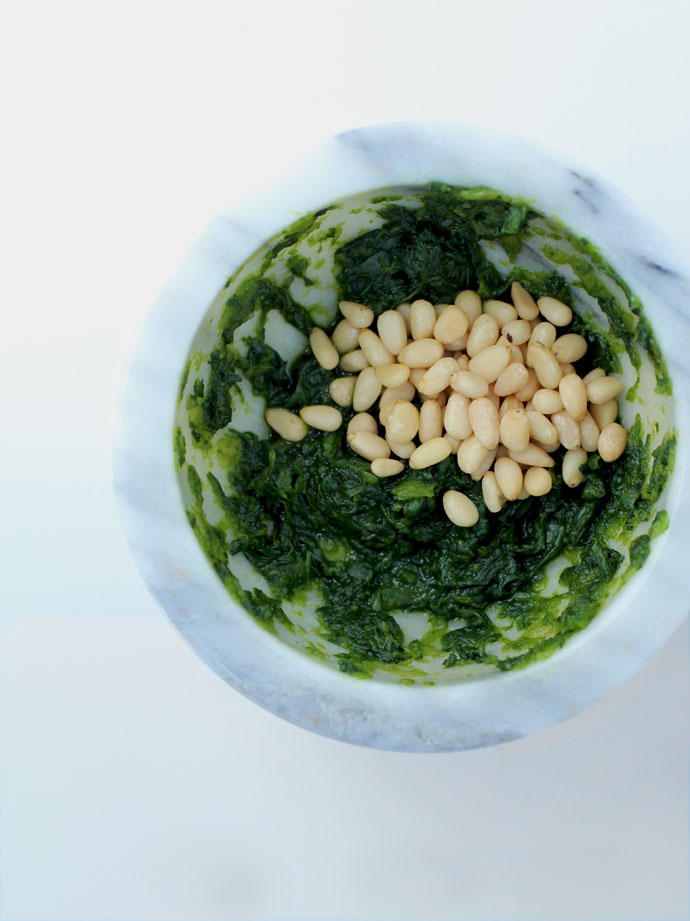
Tip: Don’t crush pine nuts after arm day.
How to Make Pesto with a Mortar and Pestle
So, let’s talk ingredients. Basil, of course. Off a plant if you can get it, even a plant from the grocery store. Coarse salt. Garlic. A handful of pine nuts. Extra virgin olive oil. And the best part?
The cheese. Traditional basil pesto calls for Parmigiano-Reggiano and the sheep’s milk cheese Pecorino Sardo. Since Pecorino Sardo can be hard to find, I substitute Pecorino Romano. Taste that stuff by itself before you put it in the pesto! Soft and crumbly with more bite than Parmigiano.
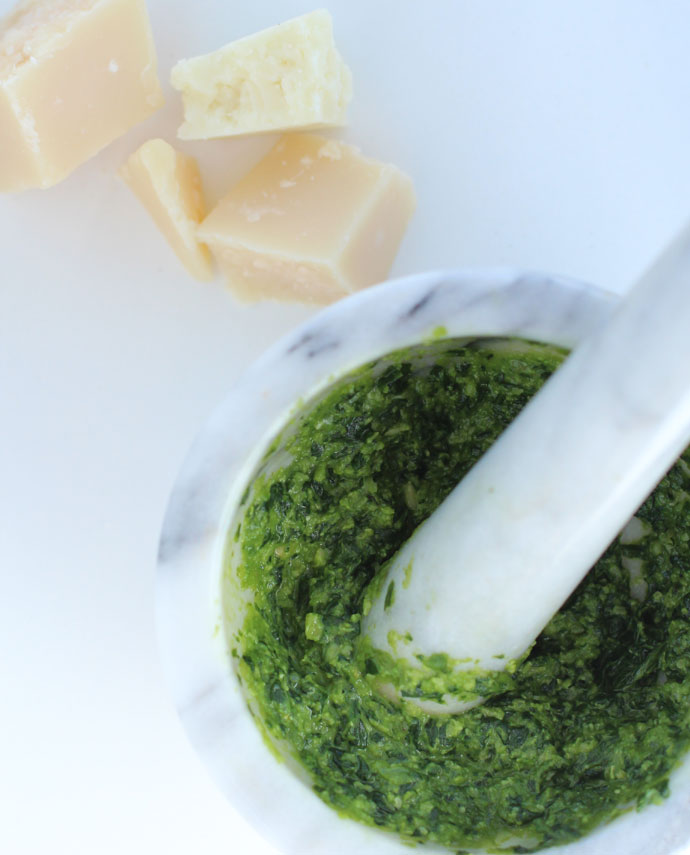
The best pesto is almost ready!
Make sure to really use some elbow grease to get everything crushed well before you add the olive oil. And don’t hesitate to chop some of it by hand first (especially the cheese) to make your work a little easier.
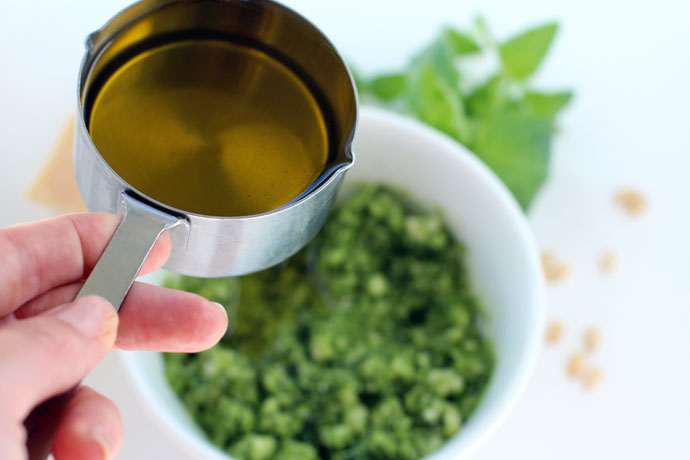
It shall become… a sauce.
P.S. If you don’t have a mortar and pestle (I used this one!), you can use a large cutting board and a heavy mug to crush most of your ingredients. Add to a bowl before stirring in the oil though!
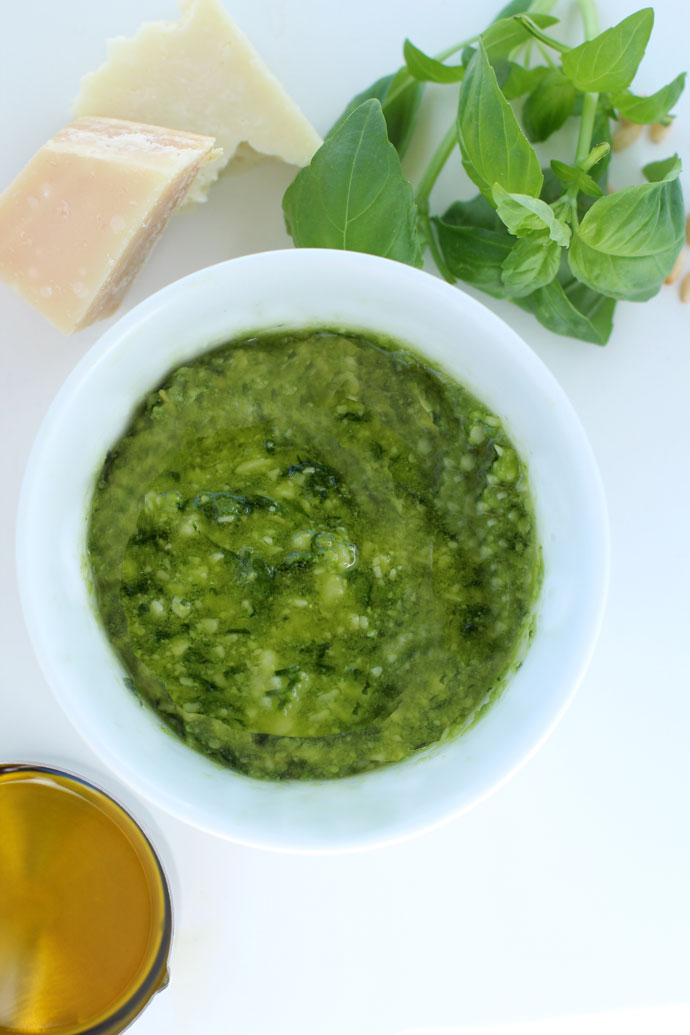
Classic Basil Pesto with a Mortar and PestleItaly’s traditional pesto made by hand 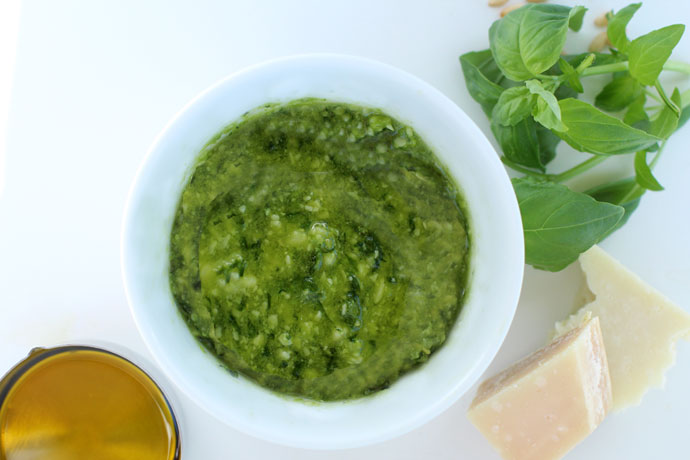
|
Prep Time: 30 minutes |
|---|
| Cook Time: None |
| Serves: 4, over about a pound of pasta |
Ingredients |
Instructions |
| 1. Smash garlic with the flat side of a big knife on your cutting board. Slam! Instructions here. Remove the peel and put in mortar bowl with a sprinkle of coarse salt. Grind into a paste with pestle. | 2. Wash basil and pat gently to dry with a paper towel. Place in mortar in batches, crushing leaves before adding more. |
| 3. Add pine nuts to mortar and crush into rest of mixture. Go at the nuts one by one! |
| 4. Chop the 2 types of cheese by hand to break up, then add to mortar and grind down with the rest of the ingredients. At this point, the pesto can be frozen as a dry paste. |
| 5. Drizzle in the oil and stir well. |
| 6. Serve with trofie (traditional twisty pasta), fusilli, or gnocchi. You can also serve on little toasts with anchovies. |
Notes |
| Recipe adapted from Tales of Ambrosia. |
More from my site





 Based on 1 Review(s)
Based on 1 Review(s)








2 Comments
Lisa
Ooh, can’t wait to try – thank you for writing this!